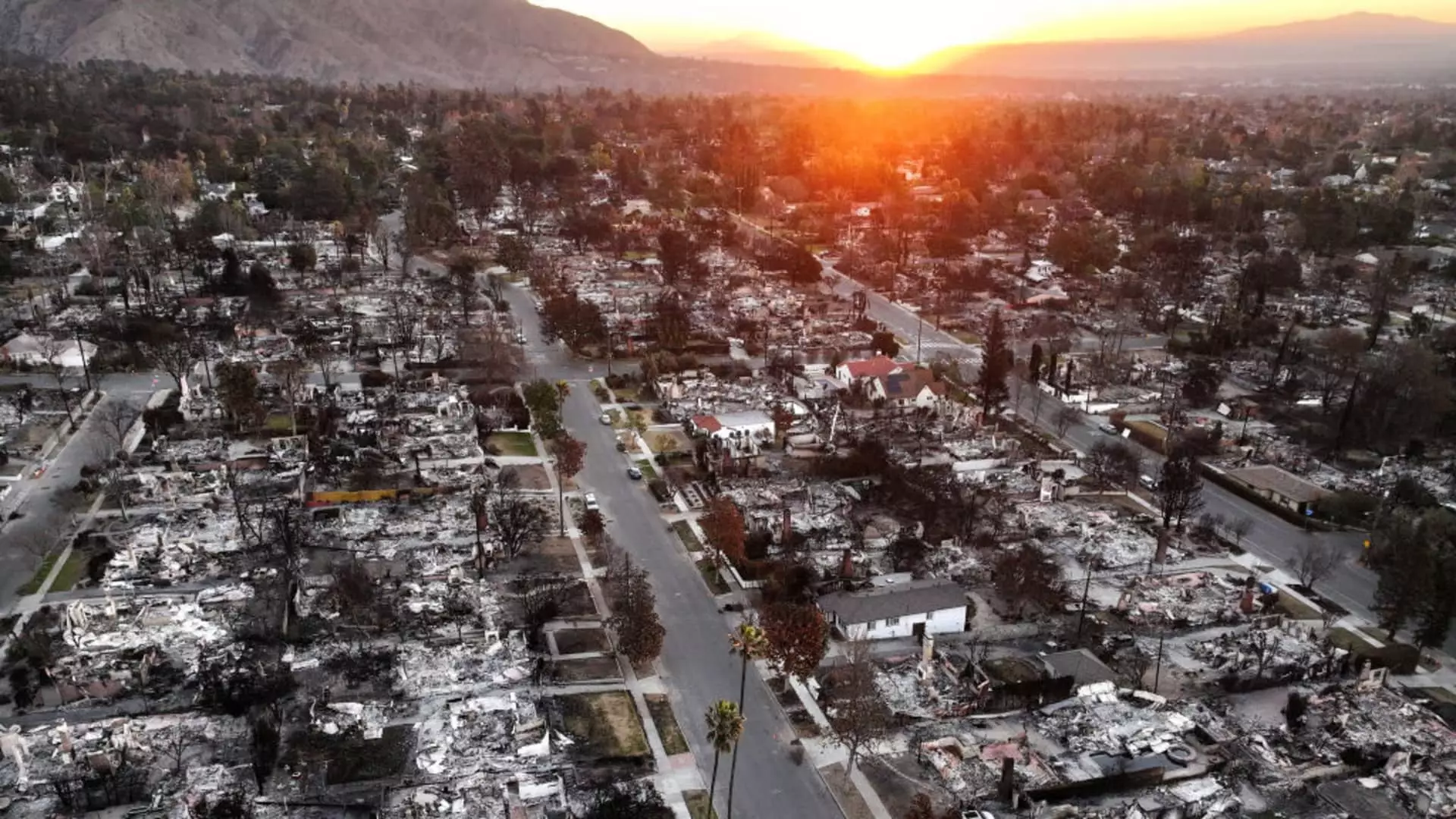In recent weeks, the disaster of California’s wildfires has painted a grim picture of loss and resilience. Families, homes, and entire neighborhoods have been ravaged by flames, leaving behind only charred remnants of what once stood proudly. Dr. Damon Raskin’s family represents many who have faced the full brunt of these natural disasters. Residents of the Pacific Palisades area watched as their homes turned to ashes, yet amidst the grief, a sense of hope emerges. With the determination to rebuild, they join countless others on the daunting journey of recovery.
The Scale of Destruction: A Community in Crisis
California’s firestorms have wrought unprecedented destruction, threatening lives and property alike. Over 12,000 homes and structures have been significantly damaged or destroyed, with estimates placing the cost at a staggering $40 billion. As communities grapple with the impact of these catastrophic events, there exists a crucial need to understand the complexities involved in recovery and rebuilding. It’s a huge task that encompasses not just home reconstruction but also the effort to ensure homes are safe and resilient against future disasters.
The experience of rebuilding post-wildfire is astoundingly multifaceted, as outlined by industry experts. Tom Grable, a president at Tri Pointe Homes, aptly stated that while reconstructing homes may seem straightforward, the actual challenge lies in preparing the land itself for building. This involves comprehensive cleanup efforts, which include removing hazardous debris strewn across the landscape. Such tasks demand concerted efforts from local authorities, private contractors, and state agencies.
California Governor Gavin Newsom and Los Angeles Mayor Karen Bass have taken significant steps to expedite the rebuilding processes by suspending certain regulatory hurdles. These executive orders are essential in cutting through the red tape that often paralyzes recovery efforts. Their initiatives, aimed at speeding debris removal and permitting processes, signify a recognition of the urgency demanded by this calamitous situation.
Strategic Planning: Building the Future
As individuals like Dr. Raskin embark on their rebuilding tasks, there is an added emphasis on fire-resistant building materials. The California state government has responded to past wildfires by instituting strict building codes, requiring homes in high-risk areas to utilize advanced fire-resilient construction materials. For Raskin, the selection of fire-resistant lumber, roofing, siding, and other features has become a pivotal part of his planning strategy. This forward-thinking approach is not merely a reaction—it’s an imperative for the future.
Additionally, the rebuilding effort is an opportunity to incorporate modern designs and technologies that were not available during the original constructions. With many experienced custom builders in the region, Dr. Raskin is already engaging with architects and experts to ensure that the new home is structurally sound and better equipped to handle future disasters.
One of the significant hurdles faced by wildfire victims like the Raskins lies within the complexities of insurance. The aftermath of fires presents the daunting task of navigating insurance claims, which can be convoluted and fraught with challenges, especially in California. Many insurers are retreating from the market, leading homeowners to seek the coverage of last resort provided by the California FAIR Plan. Dr. Raskin, like many others, faces the challenge of ensuring that he can adequately cover not only the physical rebuilding but also the considerable losses that insurance may not fully address.
Financial concerns loom large over the recovery process. With the cost of building materials potentially rising due to various factors, including tariffs on lumber imports, homeowners must anticipate additional burdens. The possibility of inflated prices directly impacts their rebuilding budgets, making all efforts to seek proper insurance compensation critical.
Despite the overwhelming challenges they face, affected families, including the Raskins, are not isolated in their recovery efforts. Community-driven initiatives, collaboration with local builders, and policy changes focus on making the path smoother for those seeking to rebuild. The notion of resilience becomes not just a personal battle but a collective endeavor, fostering community spirit in the darkest of times.
As they settle into temporary accommodations, families will continue to form new bonds and relationships as they share experiences and learn from one another. This camaraderie will amplify hope and determination, transforming individual tragedy into a shared narrative of survival and renewal. The long road to recovery in California’s wildfire-stricken communities may be arduous, but it is also a testament to human spirit and the will to rise from destruction stronger than before.
As California navigates the enormous task of recovery, the fire-ravaged neighborhoods have an opportunity to emerge from the ashes renewed and fortified. For residents like Dr. Raskin, the journey of rebuilding symbolizes more than restoration; it represents hope and a powerful commitment to resilience in the face of adversity. With coordinated efforts across government, agencies, and communities, the scars left by these wildfires may give way to a brighter, more fire-resilient future.


Leave a Reply